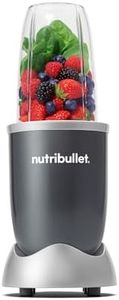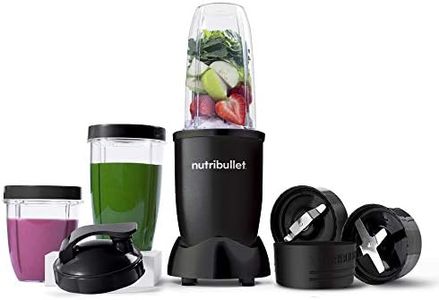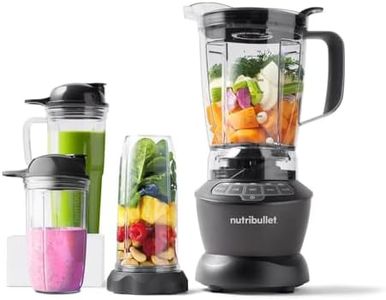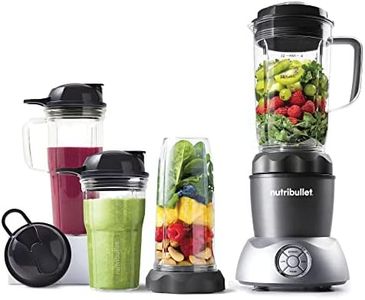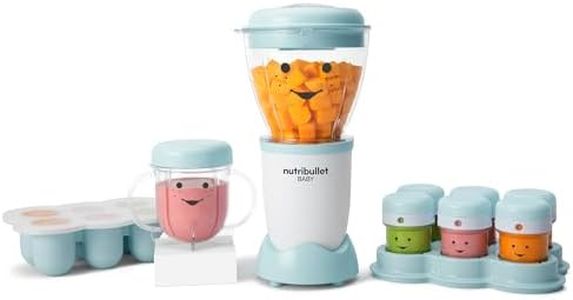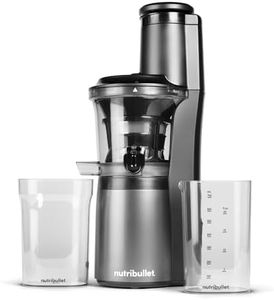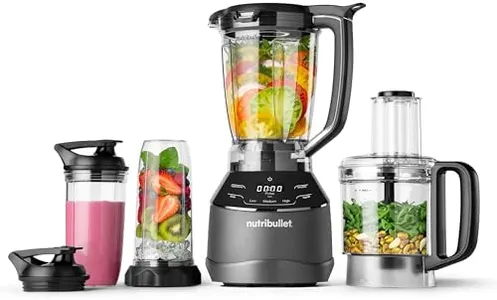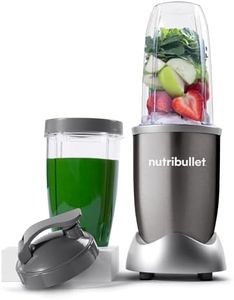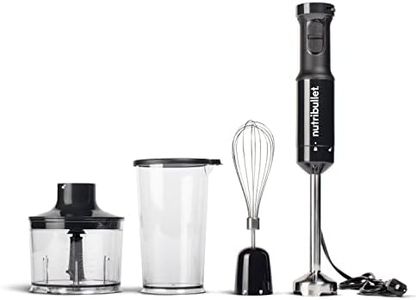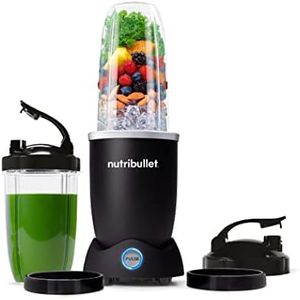We Use CookiesWe use cookies to enhance the security, performance,
functionality and for analytical and promotional activities. By continuing to browse this site you
are agreeing to our privacy policy
10 Best Nutribullets
From leading brands and best sellers available on the web.Buying Guide for the Best Nutribullets
Choosing the right blender, like a Nutribullet, depends greatly on your lifestyle, what you like to make, and how often you plan to use it. It's helpful to think about your daily routine and health goals—is this mainly for making smoothies, nut butters, soups, or maybe just the occasional shake? Considering this early will help you focus on the features that matter most to you and avoid paying for things you don't really need. Get familiar with the main specs that set different models apart so you can confidently compare and match them to your needs.Power (Wattage)The wattage of a blender tells you how powerful the motor is. This matters because higher wattage can handle tougher foods like frozen fruit, nuts, and fibrous vegetables, blending them smoothly and without overworking the motor. Blenders can range from about 200 watts (suitable for lighter tasks like simple shakes) to over 1000 watts (great for crushing ice, thick smoothies, or making nut butters). If you often blend hard ingredients or like super-smooth textures, look for models on the higher end. If you're just making simple drinks, a lower wattage should work fine.
CapacityCapacity refers to the size of the blending cup or pitcher. It's important because it decides how much you can blend at once. Smaller capacities (around 12-20 ounces) are perfect for single servings and quick blends, making them great for people on the go or those with limited storage space. Larger capacities (up to 32 ounces or more) are better if you make multiple servings at once or like to meal-prep. Knowing how much you typically want to blend helps you avoid the frustration of having to do multiple batches or wasting space.
Blades and MaterialsThe design and material of the blades affect how well the blender can break down foods and how long it will last. Stainless steel blades are the most common as they're durable and can handle a variety of textures. The shape, thickness, and arrangement of the blades can also influence blending performance. For regular use or tougher ingredients, look for sturdy stainless steel arrangements. If you're mainly blending softer foods, most blade setups will do the job.
Ease of CleaningHow easy a blender is to clean can make a big difference in how often you use it. Some blenders have dishwasher-safe parts or simple designs with fewer pieces to wash. If you plan to use your blender daily, or want something convenient, prioritize options that can be quickly rinsed or put in the dishwasher so clean-up doesn’t become a hassle.
Speed SettingsSome blenders offer multiple speed settings, while others just have a single-button start. Having different speeds can be helpful if you want more control over texture, such as a chunky salsa versus a smooth puree. If you like experimenting with various recipes, look for adjustable speed options. If you prefer simplicity, one-touch operation might suit you best.
Portability and AccessoriesPortability features, like travel lids or compact designs, are important if you want to take your smoothie on the go or save counter space. Some blenders come with extra cups or containers, which can make prepping ahead or sharing much easier. Think about your routine—if you want to blend and then dash out the door, look for models with cups that double as travel mugs.
